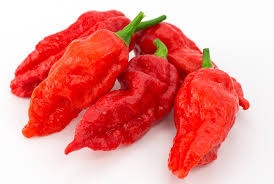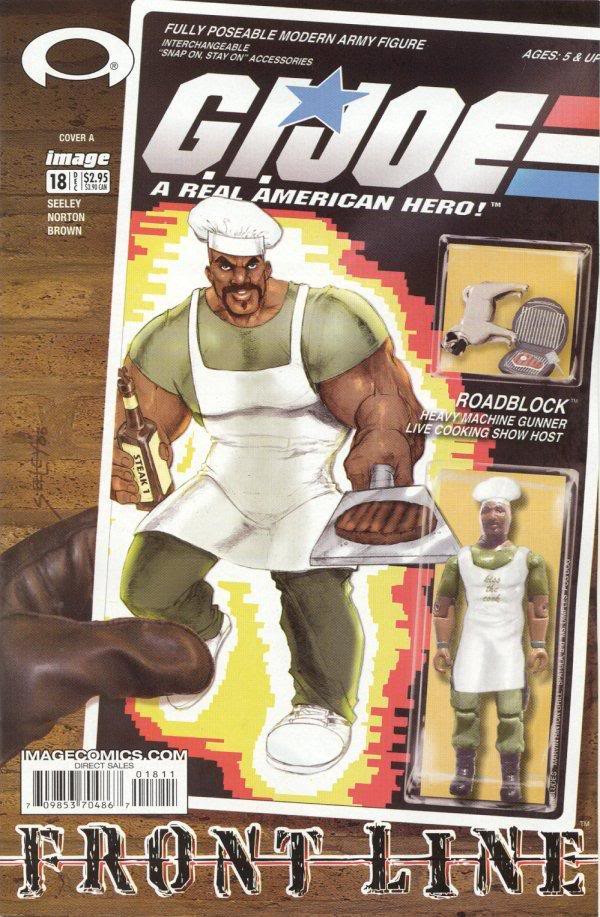In Keyword Design, I use a single word as inspiration for a mundane item, a magic item, a feat or trait, a spell, and a class option. Today’s word is “taste” as suggested by Nick V.
Mmmmm… Pathfinder.
I could have found a wider variety of definitions of today’s keyword. I didn’t. Maybe I was inspired by all the recent holiday meals. Maybe food- and flavour-based are so rare in Pathfinder, it was ripe for the picking. All I know is that today’s keyword was brought to you by more snacks than usual.
| “Taste” | ||
| TYPE | NAME | DESCRIPTION |
| Mundane Item | Ghost pepper | Eating this spicy pepper is considered a test of mettle |
| Magic Item | Spice weasel | The pepper grinder turns spice into a dust cloud |
| Feat | Unpalatable | No meat is as notoriously bitter as gnome flesh |
| Spell | Hero’s ration | An emergency food supply |
| Class Option | Chefromancer | A magical cuisinier whose meals are enchanting |
New Mundane Items
 GHOST PEPPER
GHOST PEPPER
Cost: 150 gp Weight –
This exotic pepper is bread by cultures that have built up hypertolerance to spice. They are considered gut wrenching to most pallets.
When a living creature eats a ghost pepper, they must succeed at a DC 25 Fortitude save or be sickened for 1d4 rounds. Additionally, they lose their sense of taste for 1 minute.
We’ve all been there. “It’s just a pepper,” we think. “How spicy can it be?” Stupid spicy. We need to accept that we are spice-sensitive weaklings and not put ourselves through this!
New Magic Item
MAGIC SPICE MILL
Aura faint transmutation; CL 5th
Slot none; Price 500 gp; Weight 1/2 lb.
DESCRIPTION
An oiled and engraved wooden shaft in which herbs and spices can be placed to easily add to a meal. Unlike mechanical spice mills, a magic spice mill does not require manual turning by the user. One simple turn of the lever grinds the contents instantly. Remove the cap and enjoy.At its most practical, the rich use magic spice mills to flavour their meals. However, if filled with a fine grain and activated without the cap on, a magic spice mill fires a cloud of dust in a 15 foot cone. Creatures in the area are coated in flour, including invisible creatures.
Loading a magic spice mill for this purpose requires ¼ pound of flour and follows the rules for loading firearms (including using Rapid Reload to load the magic spice mill more quickly). Firing a magic spice mill filled with flour is a standard action. Removing a flour coating is a full round action.
CONSTRUCTION
Requirements Craft Wondrous Item, prestidigitation; Cost 250 gp
This was going to be a way to turn spicy food into a blinding cloud but at the last minute I changed it to a ghost busting tool, and I think it’s a good one. Opponent goes invisible? Bust out of the flour and the magic spice mill and be very, very quiet.
This plays on a line in the description of the invisibility condition; “One could coat an invisible object with flour to at least keep track of its position (until the flour falls off or blows away).” As far as I know, there aren’t rules for throwing flour at an invisible creature. As a GM, I would make it a touch attack against a single square, so this situational magic item still works differently than that, justifying its existence.
New Trait
UNPALATABLE (race trait)
Predators find something about the taste of your flesh repulsive.
Prerequisite: Gnome
Benefit: Any creature that hits you with a bite attack gains the sickened condition for 1 round unless it succeeds at a Fortitude save (DC = 10 + half your HD + your Constitution modifier). Any creature that swallows you whole gains the nauseated condition for 1 round unless it succeeds at a Fortitude save (same DC as above). If you are trapped in a creature’s gullet and it becomes nauseated, the creature vomits you back out immediately as a free action at the start of the creature’s turn; you land prone adjacent to the creature.
My affinity for gnomes is well known, and I’ve mentioned before that it all started with a short story in Dragon #229, The Taking of Mount Nevermind by David Wise. One of the many interesting facts the story establishes about gnomes that helped them stand out to me from boring old halflings was that they tasted disgusting. This has never been brought over to Pathfinder by Paizo and I’m tired of waiting.
I will admit that I based this trait is based 100% on the bitter pill alchemist discovery. It did exactly what I wanted it to, there was no need to reinvent the wheel.
New Spell
HERO’S RATION
School conjuration (creation); Level bard 1, cleric/oracle 1
CASTING
Casting Time 1 minute
Components V, S, DF
EFFECT
Range close (25 ft. + 5 ft./2 levels)
Effect meal for one creature
Duration 24 hours plus 1 day/level; see text
Saving Throw none; Spell Resistance no
DESCRIPTION
You bring forth a perfectly edible lump of protein with the nutritional value of a meal. It takes 1 minute to consume. If it is eaten within 24 hours of being created, the creature gains a +1 morale bonus on Will saves against fear for 1 hour, and gains 1d8 temporary hit points + 1 point per two caster levels (maximum +5). After 24 hours, the hero’s ration loses these benefits but still sustains a creature as a meal.
If the creature is interrupted while eating for longer than 1 round, the spell is ruined and all effects of the spell are negated.
Originally I came up with a spell that improves your ability to appraise art and jewelry. It wasn’t anything special and stood out as the only taste option that wasn’t food-related. So I swapped it out for this lesser version of Heroes’ Feast. Speaking of which…
New Class Option
CHEFROMANCER
New Hybrid Class
 Although most anyone can learn to cook adequately, the master level of food preparation is as much art as it is science, requiring as much practice and study as any other academic field. But, like any other academic field, there are those with an innate understanding of its underlying mechanisms. Beyond even a natural connection, an intuitive few are as supernaturally tapped into what makes ingredients a recipe as a bard is tapped into what makes notes a performance. These kitchen enchanters are known as chefromancers.
Although most anyone can learn to cook adequately, the master level of food preparation is as much art as it is science, requiring as much practice and study as any other academic field. But, like any other academic field, there are those with an innate understanding of its underlying mechanisms. Beyond even a natural connection, an intuitive few are as supernaturally tapped into what makes ingredients a recipe as a bard is tapped into what makes notes a performance. These kitchen enchanters are known as chefromancers.
Role: Chefromancers bring greater flexibility to support roles, able to modify the duration of their beneficial magic on the fly, but require patience as they prepare their their magical meals.
Alignment: Any.
Hit Die: d8.
Parent Classes: Alchemist and bard.
Starting Wealth: 3d6 × 10 gp (average 105 gp.) In addition, each character begins play with an outfit worth 10 gp or less.
Class Skills
The chefromancer’s class skills are Acrobatics (Dex), Appraise (Int), Bluff (Cha), Craft (Int), Diplomacy (Cha), Disable Device (Dex), Intimidate (Cha), Knowledge (arcana) (Int), Knowledge (local) (Int), Knowledge (nature) (Int), Knowledge (nobility) (Int), Linguistics (Int), Perception (Wis), Perform (Cha), Profession (Wis), Sense Motive (Wis), Sleight of Hand (Dex), Spellcraft (Int), and Use Magic Device (Cha).
Skill Ranks Per Level: 6 + Int modifier.
| Table: Chefromancer | |||||||||||||
| Level | Base Attack Bonus | Fort Save | Ref Save | Will Save | Special | Snacks Per Day | |||||||
| 1st | 2nd | 3rd | 4th | 5th | 6th | ||||||||
| 1st | +0 | +2 | +0 | +2 | Snack alchemy, preparation method, spark | 1 | — | — | — | — | — | ||
| 2nd | +1 | +3 | +0 | +3 | Bomb 1d6, bonus feat, inspiring aroma | 2 | — | — | — | — | — | ||
| 3rd | +2 | +3 | +1 | +3 | Poison use, preparation method | 3 | — | — | — | — | — | ||
| 4th | +3 | +4 | +1 | +4 | 3 | 1 | — | — | — | — | |||
| 5th | +3 | +4 | +1 | +4 | Bonus feat | 4 | 2 | — | — | — | — | ||
| 6th | +4 | +5 | +2 | +5 | Bomb 2d6, preparation method | 4 | 3 | — | — | — | — | ||
| 7th | +5 | +5 | +2 | +5 | 4 | 3 | 1 | — | — | — | |||
| 8th | +6/+1 | +6 | +2 | +6 | Bonus feat | 4 | 4 | 2 | — | — | — | ||
| 9th | +6/+1 | +6 | +3 | +6 | Preparation method | 5 | 4 | 3 | — | — | — | ||
| 10th | +7/+2 | +7 | +3 | +7 | Bomb 3d6 | 5 | 4 | 3 | 1 | — | — | ||
| 11th | +8/+3 | +7 | +3 | +7 | Bonus feat | 5 | 4 | 4 | 2 | — | — | ||
| 12th | +9/+4 | +8 | +4 | +8 | Preparation method | 5 | 5 | 4 | 3 | — | — | ||
| 13th | +9/+4 | +8 | +4 | +8 | 5 | 5 | 4 | 3 | 1 | — | |||
| 14th | +10/+5 | +9 | +4 | +9 | Bomb 4d6, bonus feat | 5 | 5 | 4 | 4 | 2 | — | ||
| 15th | +11/+6/+1 | +9 | +5 | +9 | Simmer | 5 | 5 | 5 | 4 | 3 | — | ||
| 16th | +12/+7/+2 | +10 | +5 | +10 | 5 | 5 | 5 | 4 | 3 | 1 | |||
| 17th | +12/+7/+2 | +10 | +5 | +10 | Bonus feat | 5 | 5 | 5 | 4 | 4 | 2 | ||
| 18th | +13/+8/+3 | +11 | +6 | +11 | Bomb 5d6 | 5 | 5 | 5 | 5 | 4 | 3 | ||
| 19th | +14/+9/+4 | +11 | +6 | +11 | Bonus feat | 5 | 5 | 5 | 5 | 5 | 4 | ||
| 20th | +15/+10/+5 | +12 | +6 | +12 | Heroes’ feasts | 5 | 5 | 5 | 5 | 5 | 5 | ||
Class Features
The following are the class features of the chefromancer.
Weapon and Armor Proficiency: Chefromancers are proficient with all simple weapons, the light hammer, handaxe, and machete, and bombs. They are also proficient with light armor, but not with shields.
Snack Alchemy (Su): Chefromancers are trained in the creation of mundane alchemical substances and extract-like magical meals called snacks out of food stuffs. This functions like a alchemist’s alchemy, except as noted:
A chefromancer can use Profession (baker, brewer, butcher, or cook) in place of Craft (alchemy) to create alchemical items, gaining a competence bonus equal to his class level on the skill check. In addition, a chefromancer can use Profession (baker, brewer, butcher, or cook) to identify potions as if using detect magic. He must hold the potion for 1 round to attempt such a check.
Like an alchemist, a chefromancer prepares his spells by mixing ingredients and a tiny fraction of his own magical power into a number of extracts, called a snack. These snack must be eaten as a full round action, not a standard action, however they are not bound to their creator. Anyone can eat a snack, although they must do so while it is fresh. How long a snack remains fresh and how long it takes to prepare depends on how it is prepared.
To learn to prepare a snack, a chefromancer must have at least an Charisma score equal to 10 + the snack’s level. The saving throw DC for a chefromancer snacks is equal to 10 + the snack’s level + the chefromancer’s Charisma modifier.
Preparation Method (Su): There is more than one way to bake a pie. When a chefromancer prepares a snack, he chooses how from the preparation methods he knows. A snack’s preparation method dictates how long it takes to prepare the snack, and how long the snack remains fresh.
Bake: A prolonged method that allows the flavours to set in.
Preparation time: 10 minutes/spell level
Freshness: 10 minutes/spell levelBlend: A simple but skillful sifting of ingredients.
Preparation time: 1 full round action
Freshness: 1 roundChar: Delicate exposure to an open flame.
Preparation time: 1 minute/spell level
Freshness: 1 minute/spell levelFlambé: Sudden exposure to incredible heat.
Preparation time: 1 round/spell level
Freshness: 1 round/spell levelStew: Extended cooking time for maximum flavour infusion.
Preparation time: 1 hour/spell level
Freshness: 10 minutes/spell level
A snack’s preparation time is in addition to its casting time. A snack must be prepared.
A chefromancer learns a cooking method at 1st level and an additional cooking method at 3rd, 6th, 9th, and 12th level.
Spark (Sp): A chefromancer gains spark as a spell-like ability at 1st level.
Bomb (Su): At 2nd level, a chefromancer learns to contain hot oil in a sticky dough that can be hurled at enemies. This functions in all ways like an alchemist’s bomb.
Bonus Feat: At 2nd level and every three levels thereafter, a chefromancer gains one of the following as a bonus feat: Catch Off Guard, Extra Discover, Throw Anything. He can choose feats from this list even if he does not have the normal prerequisites. If he chooses Extra Discovery, he can choose any alchemist discovery that modifies the bombs or poisons the chefromancer creates.
Inspiring Aroma (Ex): Beyond pleasant, a familiar smell can be comforting and reassuring. A chefromancer knows this, and keeps a few particularly powerfully scented spices on hand to motivate their allies while they cook.
At 2nd level, when a chefromancer prepares a snack, his allies within 60 feet who can smell the chefromancer gain a +1 bonus to one of the following, chosen by the aly when the chefromancer begins preparing the snack: AC, attack, saving throws, skill checks, weapon damage.
This bonus increases by +1 at 5th level and every five levels thereafter.
Poison Use (Ex): Chefromancers are trained in the use of poison and starting at 3rd level, cannot accidentally poison themselves when applying poison to a weapon.
Simmer (Ex): At 15th level, when a chefromancer is not preparing a new snack, he can maintain the freshness of a snack he already prepared as a free action.
Heroes’ Feasts (Sp): Three times per day at 20th level, a chefromancer can cast heroes’ feast as a spell-like ability.
I know what you’re thinking: Ryan’s a mad genius! Funny enough, there is a history of the team foodie in heroic fiction. While this started as a pun, I also think it stands out as a fun alternative caster. It takes longer to cast anything, but you are buffing your allies in the meantime. I kind of want to multiclass my Hell’s Rebels oracle of bones as a chefromancer now. Make bone soup!
Thanks again to Nick V for the keyword suggestion. If you have thoughts on the balance and use of these abilities, or you would like to offer a single word that you think can inspire a mundane item, a magic item, a feat, a spell, and a class option, let me know in the comments below.





Is the Freshness for Stew correct? The pattern seems to be that it would be the same as it’s prep time, but it’s significantly less.